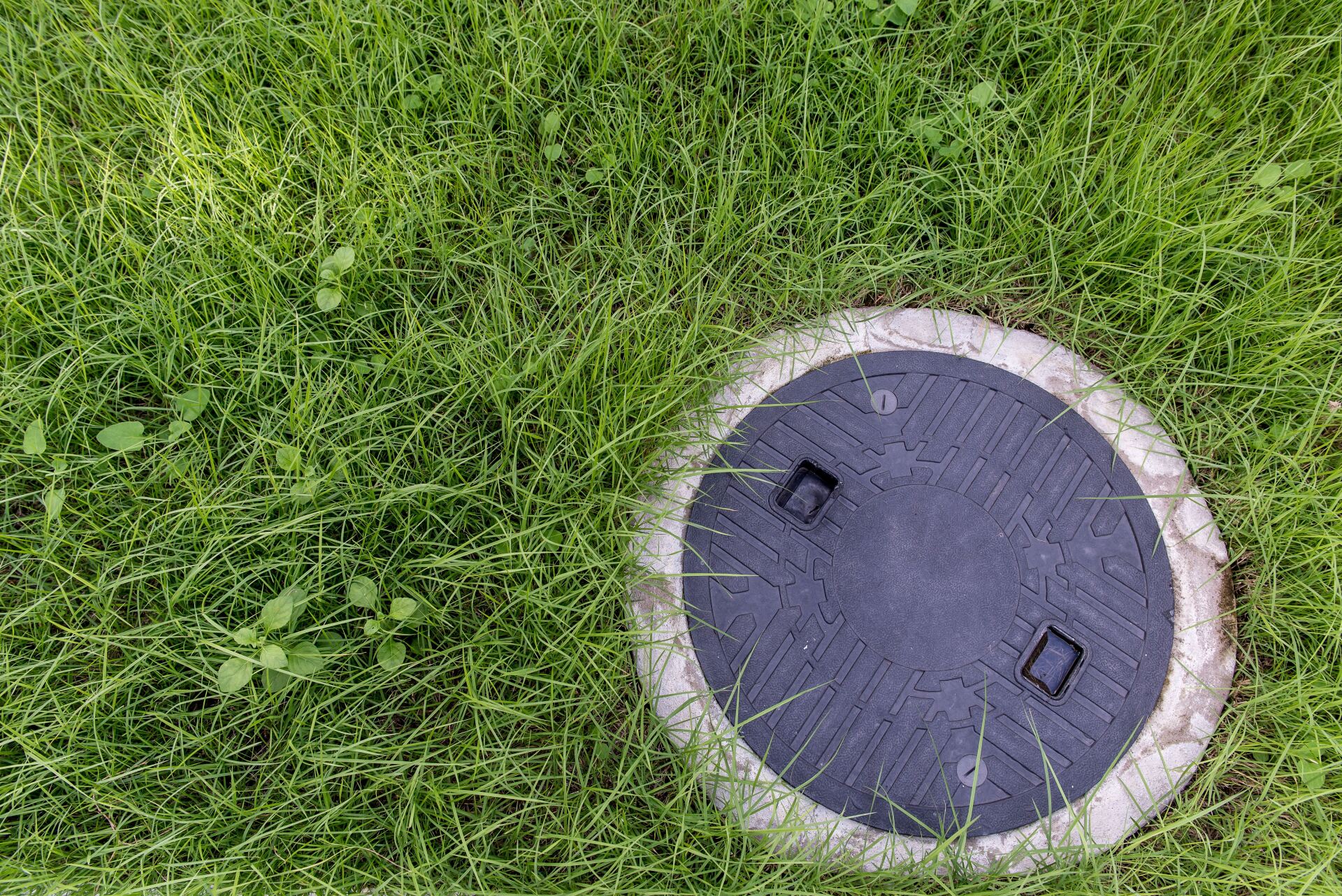How to Locate Your Septic Tank
By The Plumbing Experts | October 06, 2021
It might seem hard to believe that one of the biggest and most prominent features of your entire plumbing system is also one of the most difficult to find, but it’s absolutely true when your property runs on a septic system. There’s a good reason for this: septic tanks are large, unsightly, smell bad, and give off a sense of filth that isn’t exactly undeserved. Burying them underground simply makes sense—not only does this help protect them from damage, but it gives you more usable space on your property and hides what would otherwise be a tremendous eyesore.
That being said, hiding a tank underground can make it more difficult to find, and that’s not a good thing if you’re a homeowner who doesn’t know where their septic system is and has plans for a project involving digging. This blog is here to help you find your septic system without any pesky digging at all.
How To Find A Septic Tank: Step By Step
Septic tanks are responsible for safely storing and managing the wastewater that comes out of your home, so taking care of these systems is very important. Depending on the number of people in your family and the size of your septic tank, your system needs to be pumped every 1-3 years in order to avoid septic tank repairs or premature failure, which means you need to know how to locate it. Unfortunately, finding your tank isn’t always easy, and many plumbers charge extra to locate them, especially when your septic tank lid is buried underground. In this blog, The Plumbing Experts have laid out everything you need to know about finding the septic tank on your property.
1. Gather Some Helpful Tools
There are a few tools that will make locating your septic tank easier.
All you need to find your septic tank is:
- A shovel
- A metal soil probe
One of the most valuable tools for finding a septic tank is a soil probe—a thin piece of metal that pierces through the soil to quickly locate anything that might be buried underground. Insert your soil probe every two feet starting from the location where your sewer line leaves your home and follow it straight out. You should find your septic tank between 5 and 25 feet away from your home.
This is also a great way to locate your septic tank cover. Septic tank covers are generally at or just below ground level and are not always visible to the naked eye. While we strongly recommend keeping your cover clean and uncovered in the event you need an emergency septic service, not all people do this.
2. Use a Septic Tank Map
If you are a new homeowner attempting to locate your septic tank, a septic tank map should be part of your inspection paperwork. You can use that to help you pinpoint the exact location of your tank. If you don’t have this map, there are a few other tactics you can try.
3. Start Ruling Areas Out
There are certain regulations that specify exactly where a septic tank cannot be installed in order to prevent serious damage to your property or tank.
Your septic tank will not be:
- Right next to your well
- Underneath your home
- Against your home
- Under a paved surface such as your driveway
- Near trees
- Under structures such as a patio or deck
4. Inspect Your Property
If you look closely at your property, there’s a good chance you can actually find your septic tank without any probing at all. In many cases, a septic tank is typically indicated by a small dip or hill on your property that can’t really be explained. This is because the hole that your builders dug for your septic tank may not have been exactly the right size, but they went ahead and installed the tank anyway. This isn’t all that uncommon.
A hole that was too small will leave part of the top of the tank sticking out above ground level, and builders will often cover the rest of the tank with more soil, creating a tiny mound on your property that is often covered with grass, soil, or other natural plants. A small divot or depression is a sign that the hole was too big, and your builders simply never filled the depression to level off the hole. This is typically an area that gets extremely wet or even floods during rains.
We can pretty much guarantee that your septic tank will not be found in a few specific places. Either because of code violations or because it simply doesn’t make sense, you more than likely won’t find your septic tank near any of the following:
- If you have one, your water well (for some fairly obvious reasons)
- Any paved surfaces (it won’t be under a patio, sidewalk, or driveway unless they were added well after the home and nobody conducted a proper inspection before building it)
- Any special landscaping
5. Inspect Your Yard
Sometimes, a thorough inspection of your yard can help you locate your septic tank much faster.
Key things to look for in your yard include:
- Extra green grass: When septic tanks are overfilled, sewage can seep out into the ground and act as a fertilizer for your lawn. An extra-green patch of grass is a good indication that your septic tank is right below it.
- Unexplained puddles: Seriously overfilled septic tanks might cause water to pool up on your lawn. An unexplained puddle of water is another clear sign that your septic tank is below.
- Uneven ground: Sometimes, when installing septic tanks, installers accidentally create high or low spots on your lawn. If you come across some uneven ground, your septic tank could be right there.
If you find a spot in your yard where your septic tank might be located, use your metal soil probe to find out for sure. When your metal soil probe hits the tank, you can use your shovel to dig up the grass and locate the septic tank lid.
6. Follow Your Sewer Main/Sewer Pipes
One of the easiest ways to find your septic tank is to follow your sewer pipes. These pipes are approximately 4 inches in diameter and are often located in the basement or crawlspace of your home. Once you find where these pipes leave your house, you can follow the pipe across your yard, using your metal soil probe every 2 feet or so until you find the tank.
Additionally, every drain in your home leads to your sewer main, and your sewer main leads to your septic tank. Therefore, following the sewer main will lead you straight to your septic tank.
If you have a basement or crawlspace with exposed plumbing lines, there’s a strong chance one of those is your main sewer line. In many cases, this line will be labeled, but if it isn’t, it’s typically a metal line that’s about four inches in diameter or so. Check where this line leaves your home and what direction it’s traveling, as it typically leads straight out to the septic tank itself.
7. Check Your Property Records
If all else fails, going back to your property’s public records will probably tell you where the tank is located. Because septic systems all require permits for installation, your builders likely obtained a permit for your property. That means they had to create a detailed plan that showed your property and exactly where they planned on installing the tank. This is to ensure that the local health department is aware of the tank and can address any problems that it might cause.
If you own an older home, these records might not be available, but you might be surprised just how easy and accessible many of these records are. In fact, you might be able to find the original construction records for your home without ever even getting in the car or going to your local records office. Some municipalities have these records available online.
What to Do Once You Find Your Septic Tank
After finding your septic tank, you should make note of its location on a map of your yard. You should also use something to mark the location of the lid such as a decorative garden feature that isn’t easily moved. A few options include a birdbath, a rock, or a potted plant.
Now you are ready to schedule your septic tank inspection and pumping service!
If you have any more questions about how to find your septic tank, or need septic tank service, please call The Plumbing Experts at (864) 210-3127 today!
See What Our Customers Have to Say About Our Experts
Past Customers Are Our Best Advertisements

“Amazing service!”
Our Customers are our Biggest Advocates
See What They Have to Say
-Dawn.M
“All licensed Technicians speaks for itself”
Our Customers are our Biggest Advocates
See What They Have to Say
-Blain C.
“These guys are top notch experts”
Our Customers are our Biggest Advocates
See What They Have to Say
-William F.
“I would definitely use them again. Thanks again for everything!”
Write your caption here-Russ E.
“In my book this company deserves 5 stars!”
Write your caption here-Steven T.
“Thank you all so much for your dedication and assistance especially during a busy weekend!”
Write your caption here-Jeff M
“They knew what I needed, gave me a price before ever starting the work, and cleaned up after themselves.”
Write your caption here-Kelly A.
“I would highly recommend this company for your plumbing needs!”
Write your caption here-Janet S.
“Great company and love the 20% discount for military”
Write your caption here-David M.
“The service and care provided by The Plumbing Experts is exceptional.”
Write your caption here-Sheila N
“I will recommend them to all my clients.”
Write your caption here-Melanie E.
“All the guys are incredibly responsive, professional, reliable, and truly 24/7.”
Write your caption hereOlivia R.
“This company is very professional and we would recommend them to anyone!”
Write your caption hereVon R.
"Great great service"
Write your caption here-Leslie P.
“Very polite, very proessional and cleaned up the mess my hot water heater made.”
Write your caption here-Cathie G.
“Did a great job, very responsive team! Professionalism seems to be a lost art with most, but not you guys!”
Write your caption hereJohn W.
3307 New Easley Hwy Suite B Greenville, SC 29611
3307 New Easley Hwy Suite B Greenville, SC 29611

Slide title
Write your caption hereButton
Slide title
Write your caption hereButton
Slide title
Write your caption hereButton
The Plumbing and Air Experts, LLC
dba The Plumbing Experts
South Carolina M114184
© 2024 All Rights Reserved.




